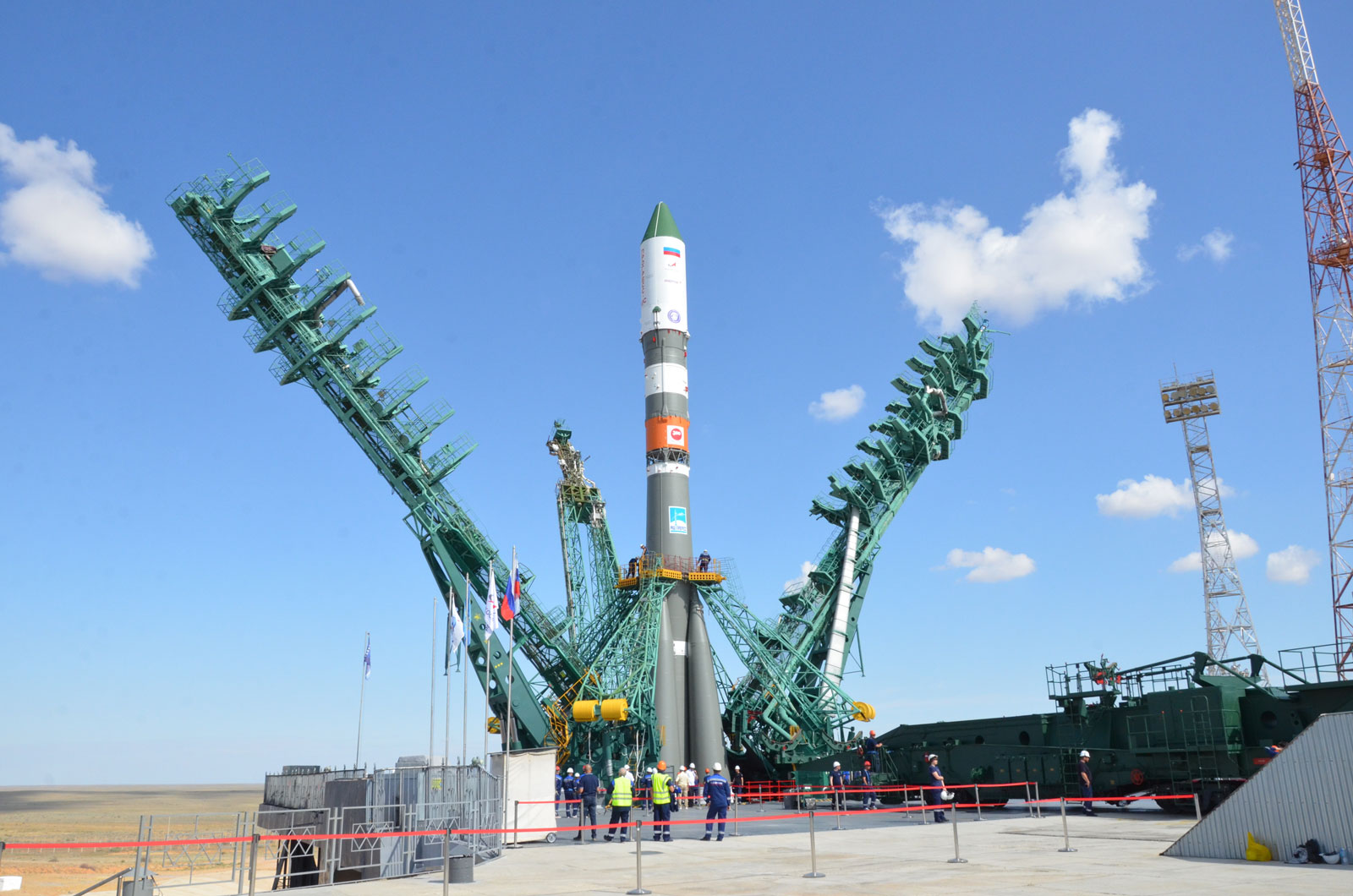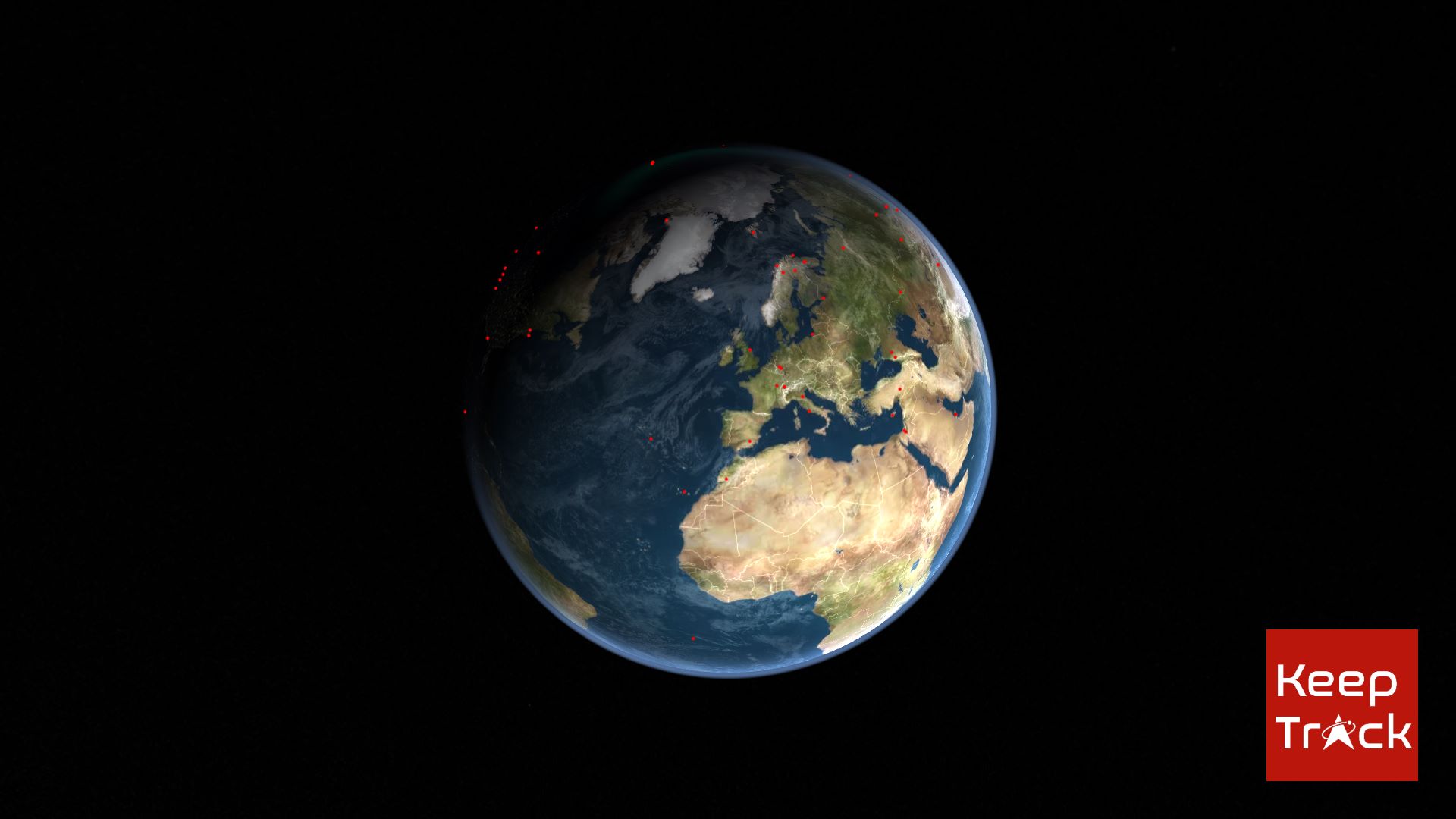· space brief · 6 min read
Space Brief 26 Jul 2025
Today's brief highlights the maiden flight of Blue Origin's Blue Ring spacecraft with a new AI-driven space sensor, debates on asteroid defense responsibilities, and updates on the U.S. Space Force's missile shield leadership.

📄Top Stories
Blue Origin is taking a significant step in space domain awareness with the upcoming launch of its Blue Ring spacecraft, showcasing the new Owl AI-powered surveillance sensor. Meanwhile, discussions continue around whether NASA or the Space Force should lead planetary defense efforts against asteroids. In military aerospace news, Gen. Mike Guetlein has been greenlit to lead the high-tech Golden Dome missile defense system.
📰Detailed Coverage
Blue Origin’s Orbital Milestone with AI Sensor
Blue Origin is gearing up for the first flight of its Blue Ring spacecraft, set to carry an AI-powered space surveillance sensor developed by Scout Space. The mission marks a significant advancement in space domain awareness as the AI sensor, named Owl, aims to enhance capabilities in detecting and tracking space debris and other orbital objects.
This launch represents a leap forward for satellite monitoring, offering potential integrations with our web app’s real-time tracking features. As the demand for comprehensive space monitoring grows, technologies like Owl could improve accuracy and responsiveness for satellite tracking enthusiasts and professionals alike.
Read the full story: Space.com
The Debate over Planetary Defense Leadership
As concerns about Earth-threatening asteroids rise, a debate is unfolding over whether NASA or the Space Force should take the helm in planetary defense. Currently, NASA leads these efforts, but voices within the defense sector advocate for the Space Force’s involvement due to its defense-centric mandate and military resources.
This ongoing discussion highlights the strategic importance of space, especially in terms of safeguarding Earth from potential asteroid impacts. As policies and responsibilities are evaluated, the future of planetary defense could see enhanced collaboration between scientific and military institutions to leverage the strengths of both.
Read the full story: Space.com
Leadership Shift in U.S. Space Force Missile Defense
The U.S. Senate has confirmed Gen. Mike Guetlein as the new leader of the nation’s Golden Dome missile defense system, aimed at protecting the U.S. from aerial threats. Tasked with collaborating across government and industry sectors, Gen. Guetlein’s role will be crucial in advancing the technology and efficiency of the national missile defense architecture.
The confirmation emphasizes the strategic importance of missile defense within U.S. space and defense operations. As space and terrestrial threats increasingly overlap, leadership decisions in capabilities like the Golden Dome are critical for maintaining national security.
Read the full story: SpaceDaily
U.S. Defense Profiles: Joni Ernst
In a notable defense sector appointment, Joni Ernst, Chairman of the Senate Armed Services Subcommittee on Emerging Threats and Capabilities, continues to shape U.S. defense policy. Her oversight includes counterterrorism, special operations, and emerging technologies critical to national and space security.
This appointment underscores the government’s focus on integrating advanced technologies into national defense strategies, including their implications for space operations and international security dynamics.
Read the full story: Breaking Defense
South Korea’s Role in U.S. Army’s Chinook Overhauls
In a cross-continental military collaboration, South Korea will carry out engine overhauls for U.S. Army Chinooks. This initiative not only strengthens defense ties between the two nations but also ensures effective global deployment of the U.S. military’s rotary-wing assets.
Such partnerships are increasingly part of global defense strategies, reflecting the interconnected nature of modern military logistics and readiness.
Read the full story: Breaking Defense
🛰️Satellite Spotlight
- Satellite Name: ONEWEB-0424
- NORAD ID: 50497
- Launch Date: December 27, 2021
- Mission: This satellite is part of the OneWeb constellation and serves a vital role in providing global communication services.
- Orbit: Low Earth Orbit (LEO)
- Operator: OneWeb
- Fun Fact: ONEWEB-0424 is equipped with a Ku-Band payload, enabling high-speed internet access across the globe.
Track this satellite in real-time on our web app: Track ONEWEB-0424
🌌Space Weather
Current space weather shows Enhanced solar wind (519 km/s).
Current
R0 - S0 - G0
Last 24 Hour Maximums
R0 - S0 - G0
Recent Alerts
- Continued Alert: Electron 2MeV Integral Flux exceeded 1000 pfu, maximum of 3124 pfu reported yesterday. Potential impacts include significant charging risks to satellite systems.
Next 24 Hours
-
Radio Blackouts Probability
- Minor: 40
- Major: 5
- Risk: None
-
Solar Radiation
- Probability: 1
- Risk: None
-
Geomagnetic Storming
- Scale: 0
- Impact: none
- Activity: Low
-
Impact Summary
- No risk of radio blackouts.
- No risk of solar radiation storms.
- Geomagnetic outlook: G1 (Minor) geomagnetic storm levels are likely on 27 Jul due to potential CME activity.
- Radiation outlook: No S1 (Minor) or greater solar radiation storms are expected.
- No significant active region activity favorable for radiation storm production is forecast.
- Radio blackout outlook: Solar activity is expected to be low with a chance for M-class flares (R1-R2/Minor-Moderate) through 28 July.
Long Term Forecast
- Forecast of Solar and Geomagnetic Activity (21 July - 16 August 2025)
- Solar activity is expected to remain mostly low with a chance for M-class (R1-R2, Minor to Moderate) flares during the outlook period.
- No proton events are expected at geosynchronous orbit.
- Greater than 2 MeV electron flux at geosynchronous orbit is expected to be high on specific dates due to recurrent CH HSS influences.
- Geomagnetic field activity is expected to reach active to G1 (Minor) storm levels on specified dates mainly due to recurrent CH HSS effects. Quiet to unsettled levels are projected on remaining days of the outlook period.
Upcoming Space Launches
July 26
- SpaceX Falcon 9:
- Starlink Group 10-26 from Cape Canaveral Space Force Station, FL, USA (08:28 UTC) A batch of 28 satellites for the Starlink mega-constellation, aiming to provide global space-based internet communication.
July 27
-
SpaceX Falcon 9:
- Starlink Group 17-2 from Vandenberg Space Force Base, CA, USA (02:09 UTC) A batch of 24 satellites for the Starlink mega-constellation, aiming to provide global space-based internet communication.
-
China Aerospace Science and Technology Corporation Long March 6A:
- Unknown Payload from Taiyuan Satellite Launch Center, People’s Republic of China (09:55 UTC) Details TBD.
-
Gilmour Space Technologies Eris-1:
- Maiden Flight from Bowen Orbital Spaceport (21:30 UTC) The maiden flight of Gilmour Space’s orbital launch vehicle Eris.
July 29
- i-Space Hyperbola-1:
- Unknown Payload from Jiuquan Satellite Launch Center, People’s Republic of China (04:03 UTC) Details TBD.
July 30
-
SpaceX Falcon 9:
- Starlink Group 10-29 from Cape Canaveral Space Force Station, FL, USA (03:30 UTC) A batch of 27 satellites for the Starlink mega-constellation, aiming to provide global space-based internet communication.
-
China Aerospace Science and Technology Corporation Long March 8A:
- SatNet LEO Group TBD? from Wenchang Space Launch Site, People’s Republic of China (07:41 UTC) A batch of Low Earth Orbit communication satellites for the Chinese state-owned SatNet constellation.
-
Indian Space Research Organization GSLV Mk II:
- NISAR (NASA-ISRO Synthetic Aperture Radar) from Satish Dhawan Space Centre, India (12:10 UTC) The NISAR satellite will use advanced radar imaging to map the elevation of Earth’s land and ice masses, contributing to understanding natural processes and hazards.
-
SpaceX Falcon 9:
- Starlink Group 13-4 from Vandenberg Space Force Base, CA, USA (15:39 UTC) A batch of 19 satellites for the Starlink mega-constellation, aiming to provide global space-based internet communication.
Note: Launch dates and times are subject to change due to technical or weather considerations.

Maurice Stellarski




